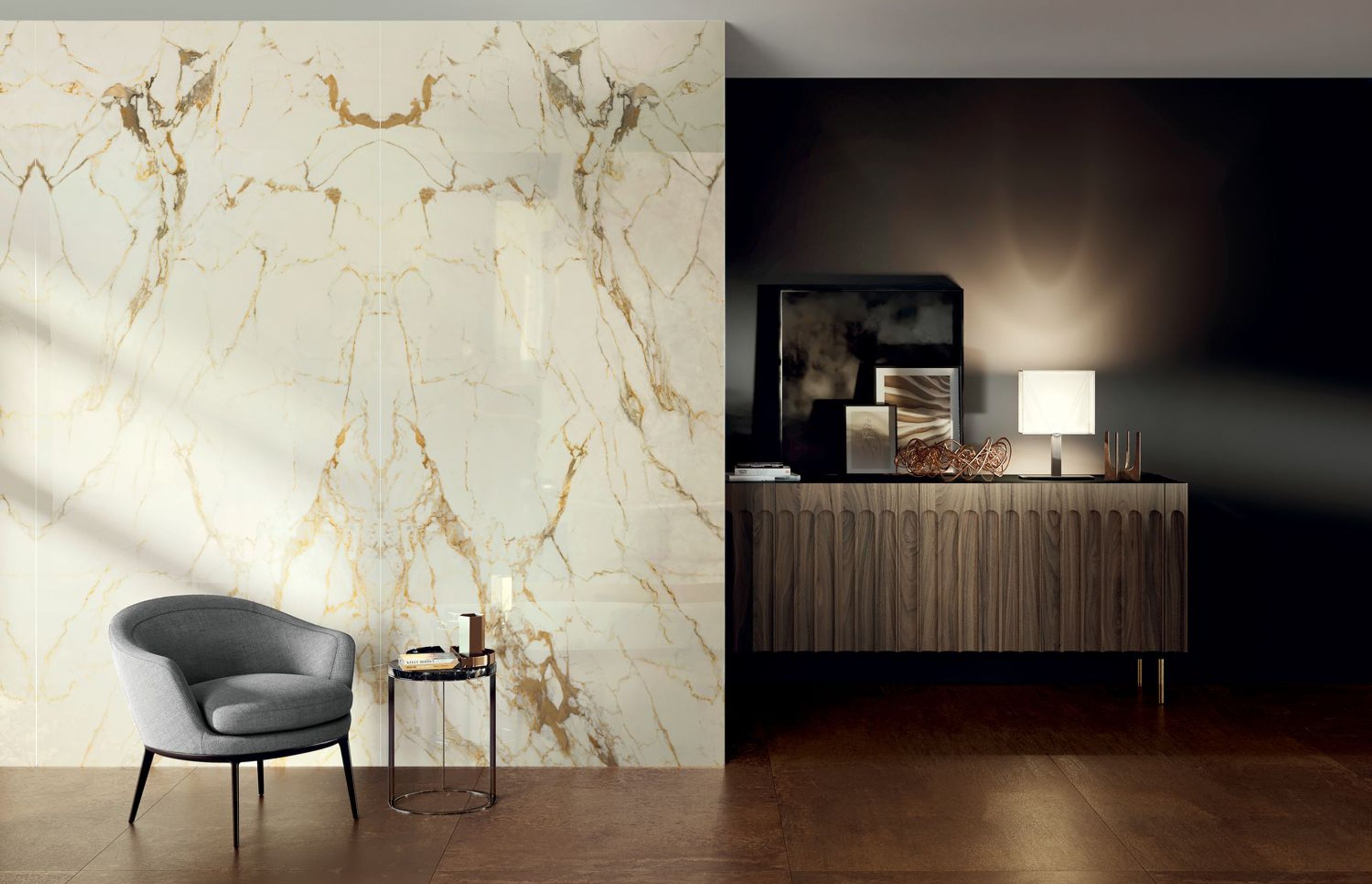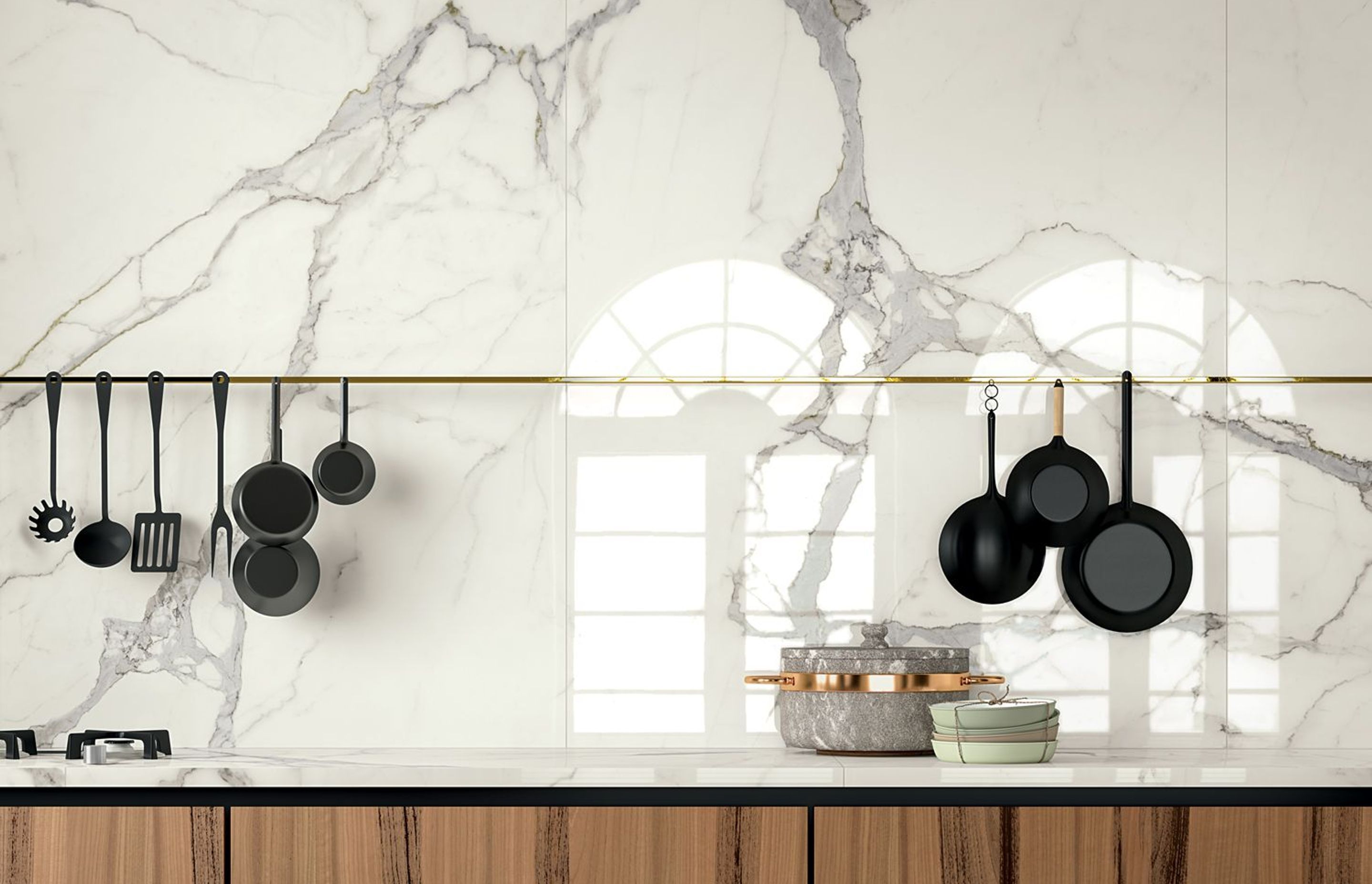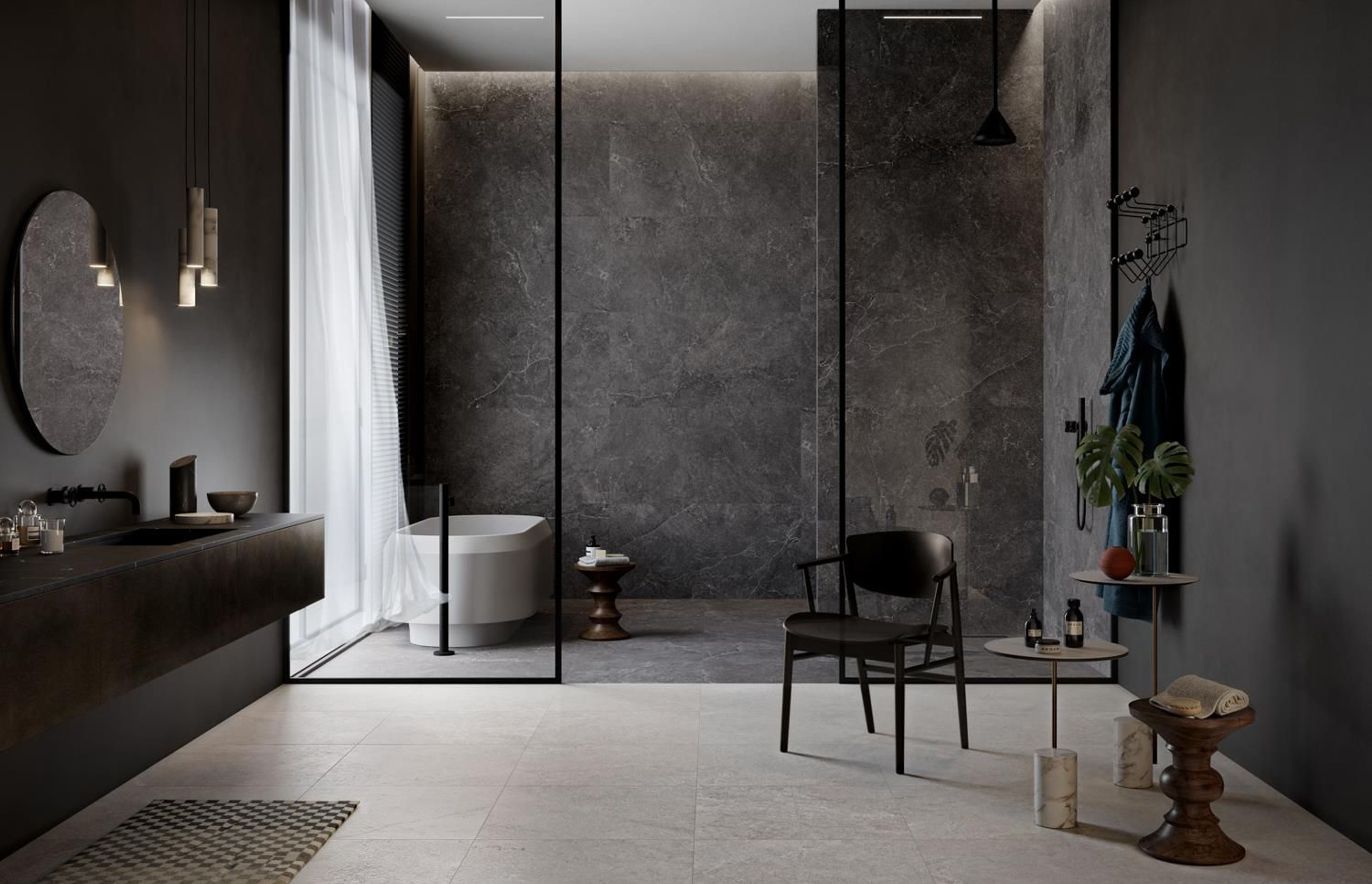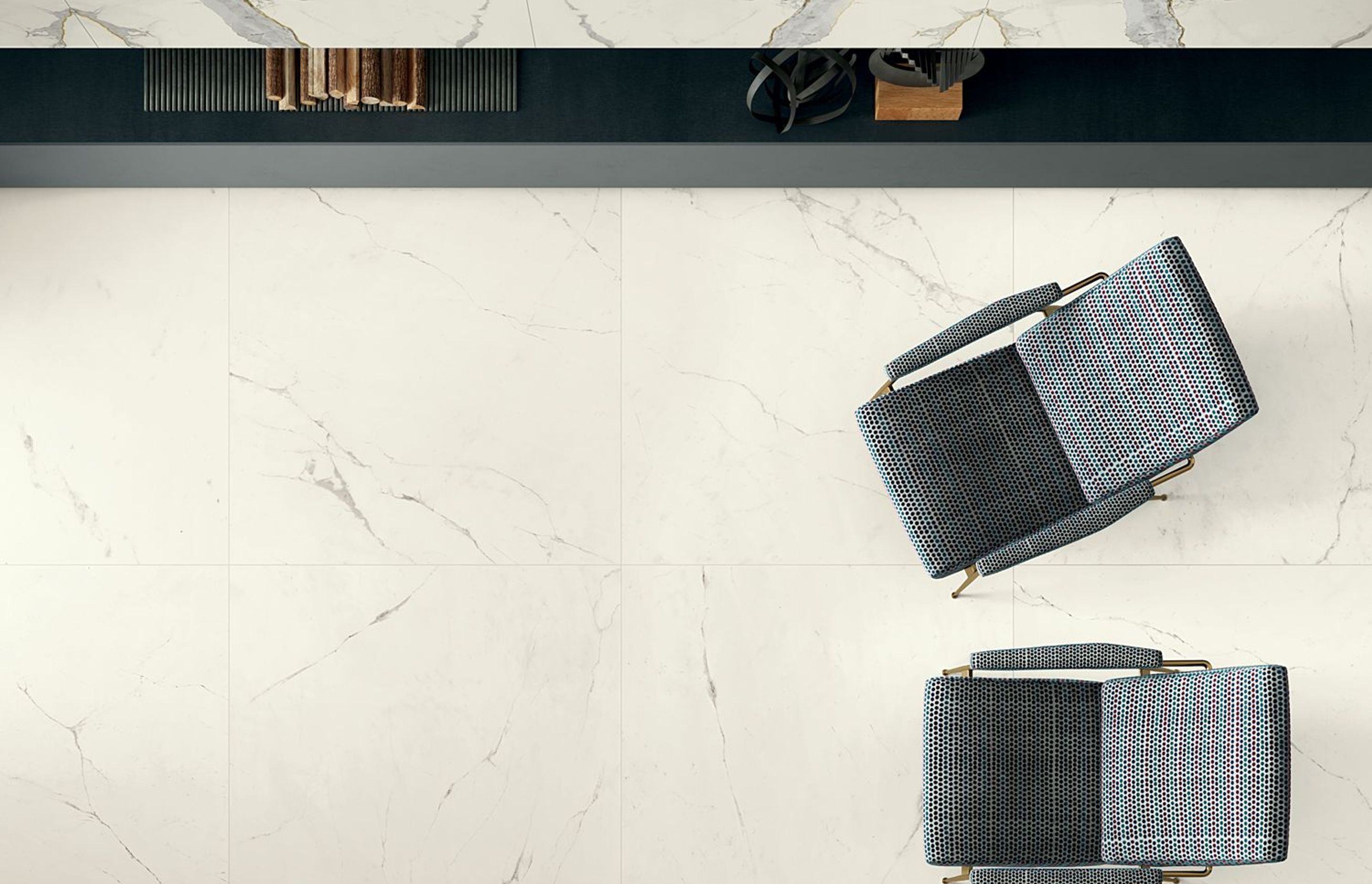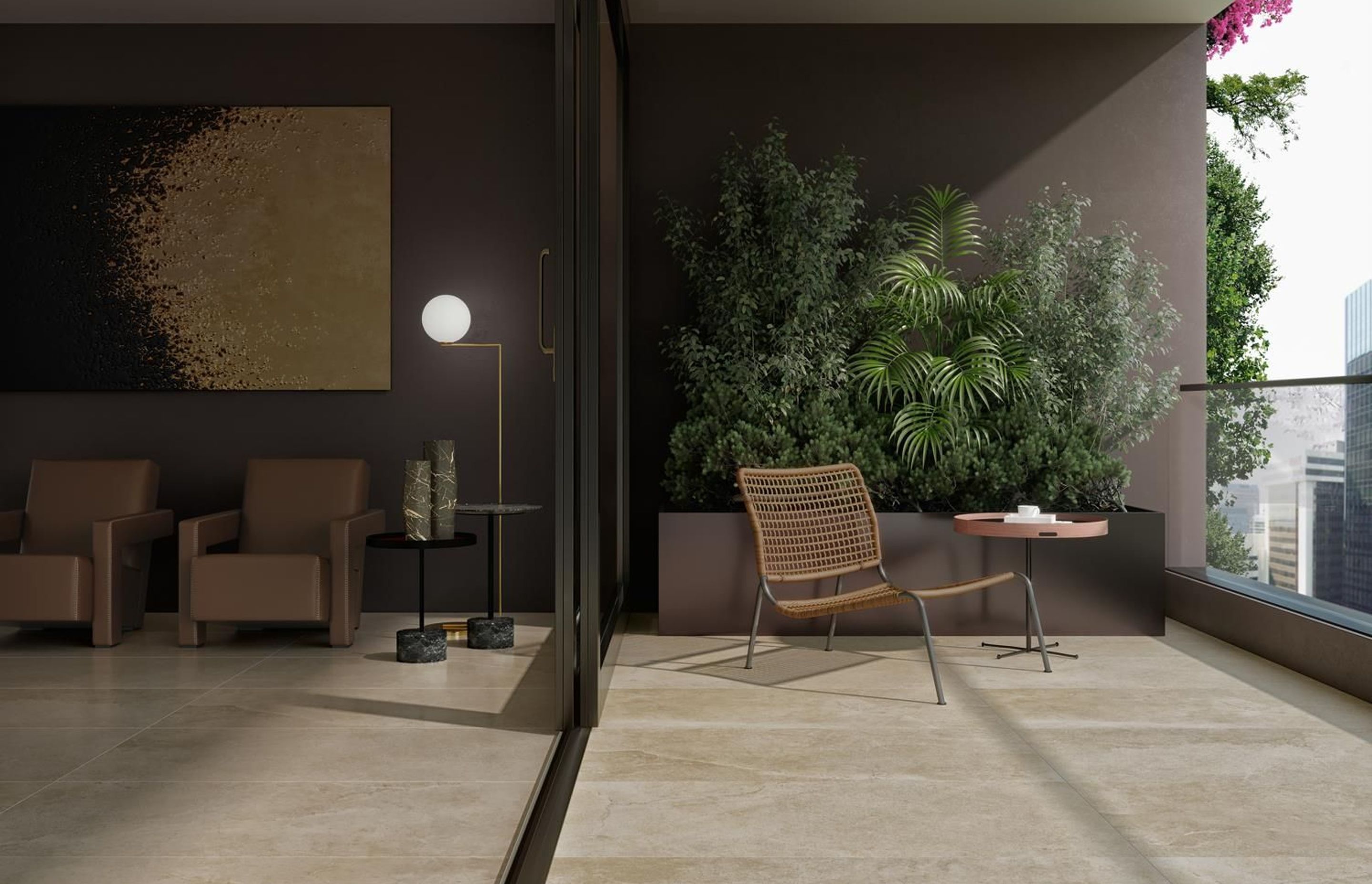Trends are always an important factor when it comes to building and decorating. The recent Cersaie Bologna Ceramic Fair – an international exhibition of ceramic tile and bathroom furnishings – showcased many of the in-vogue styles entering the market today: improved 3D digital printed tiles, large-format porcelain slabs, hyper-realistic wood and stone-look tiles, muted and earthy tones, botanical motifs and more.
But perhaps one of the most significant trends is the move towards sustainability – important in an industry where, at a global level, buildings, homes and the construction sector are responsible for 36% of the world’s total energy consumption and 37% of all CO2 emissions related to energy.
It’s great to be able to recommend a product to architects and designers that’s carbon neutral.
Zero-carbon tiles
“One of our main partners, COTTO D’ESTE, has managed to get their ultra-thin slabs to be carbon neutral,” says Carl Whiteman, director of Casa Italiana.
A universal surface for architecture, these large-format tiles are thin, versatile, easy to use and durable, thanks to an innovative production process that sees each tile reinforced with fibreglass.
Already a popular product, Carl expects the demand for Kerlite tiles in New Zealand to only increase: “The products offer a real benefit of coming in a range of sizes and being able to be installed with the Kerlite easy solution. It’s quite special that they’re now carbon neutral.”
For environmentally-conscious homeowners, designers and architects, the advanced technology used by Kerlite means the production of ultra-thin slabs uses less water, less energy, less raw materials, less pollution and zero carbon emissions with the company compensating for 100% of CO2 used.
“It’s great to be able to recommend a product to architects and designers that’s carbon neutral and focused on green thinking,” says Carl.
The products offer a real benefit of being seamless without the need for grout lines.
What colours and textures are available?
While the tiles certainly tick the box on the sustainability front, they also come in a stunning range of colours and finishes.
From the dark matte browns and glossy creams in the Vanity collection – each tile featuring marble veining with nuances of colour flowing across the surface – to the Lithos collection with tones and textures reminiscent of natural stone, Kerlite’s range covers a variety of tastes and aesthetics.
Popular trends of the Cersaie Bologna Ceramic Fair – including floral motifs and oxidised metal-look surfaces – are also answered to.
Providing the ability to bring a burst of personality to any space, the Wonderwall collection interprets wallpapers with slabs made from Kerlite’s ultra-thin, large-format porcelain stoneware. Designs such as ‘Fleur’, ‘Jungle’, ‘Lotus’ and ‘Foliage’ celebrate colour and organic pattern, many decorated with a special three-dimensional print with a bas-relief effect.
All designs are carbon neutral and can be used in many applications, from bathrooms to external cladding. Kerlite’s metallic slabs, in particular, are a striking inclusion to external facades and modern outdoor spaces – with corten and iron effects available.
“They’re all specialty products that we bring in for our customers,” says Carl.
Explore the range of carbon-neutral Kerlite tiles from Casa Italiana on ArchiPro, or visit a showroom to view the full catalogue.
Words by Cassie Birrer

